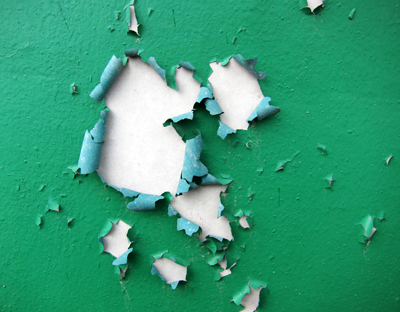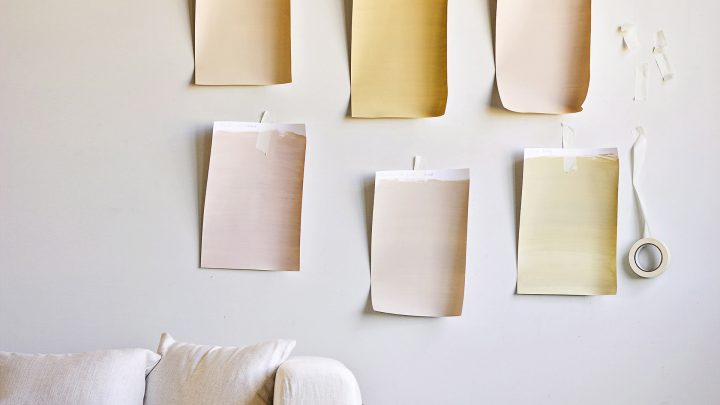Many factors can contribute to paint problems, including poor-quality siding that twists and buckles, and porous vapor barriers that allow interior moisture to seep through walls and put pressure on the paint film from the inside out. Most are solved by cleaning, scraping, and sanding. But recognizing the conditions and their causes can help prevent them in the future.

- Alligatoring—Small horizontal and vertical cracks, hairlines at first (called crazing), gradually connect to produce a rectangular grid that resembles the skin of an alligator, and then chunks start to break away. Common causes:
- The top coat is applied before the primer has dried.
- A rigid top coat is applied over a more flexible undercoat.
- One thick coat instead of two thinner coats is applied to save time.
- Old paint simply fails after losing its elasticity.
- Blistering—Paint won’t adhere in spots where bubbles form under the paint film. Common causes:
- High temperatures and harsh sunlight overheat the siding and paint.
- Painting over a damp surface.
- Chalking—Paint produces a fine surface powder. In most cases, this gradual renewal process isn’t noticeable and the powder washes away in rainy weather. But excessive chalking can cause fading, stain other surfaces, and prevent good adhesion of new paint. For example, you should specify non-chalking paint on second-story siding, where residue would wash down onto first-story brick. Common causes:
- Using poor-quality paint or an indoor paint outdoors.
- Thinning or overspreading the top coat.
- Cracking and flaking—Cracking can run mainly in one direction or in a grid pattern, like alligatoring. Common causes:
- Using poor-quality paint that lacks elasticity.
- Painting over bare wood without priming.
- Overthinning or overspreading paint.
- Painting in dry, windy conditions that dry paint too quickly.
- Peeling—The topcoat, or both topcoat and primer, lose adhesion and peel away in patches, sometimes in large sheets. Common causes:
- Moisture seeping into and though poorly caulked joints.
- Interior moisture escaping through walls.
- Painting over a damp surface.
- Mold and mildew—This is normally due to the location, not the paint or application. Unless the growth is removed (generally with a bleach-based power washing or scrubbing), it will feed on and discolor the fresh paint—even specially formulated mildew-resistant paint. Mold often looks like dirt. To tell the difference, put a drop of household bleach on the discoloration: Dirt will be unaffected; mold will turn white. Common causes:
- Poor ventilation in full baths.
- Leaking gutters and bad foundation drainage keep the wall damp.
- The surface, often a north wall, is shrouded by vegetation that limits sunlight and ventilation.


